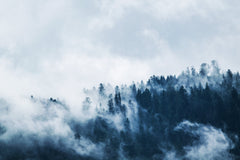
Ways to Work Out in The Office
If work commitments prevent you from fitting a workout into your daily routine, all is not lost. While it may not be a substitute for a good gym session or an after work run, adding a few clever, considered moves into your working day can go a long way to eliminate some of the common aches and pains that occur when you sit behind a desk all day. According to a 2019 study, over 80% of UK adults experience lower back pain in their lives.
Mobilise your spine
Sitting at a desk for hours on end is bad news for the mobility of your spine and the ensuing tension it creates in your shoulders and lower back. Cat/camel stretches that you would usually do on the floor can be adapted to be done discreetly at your desk instead and will go a long way to helping flex your back and keep it from seizing up. Stretching your arms out in front of you with interlocked fingers is another way to help give your spine a good stretch, as is raising your arms above your head. Holding these static stretches for five seconds a few times enough ought to help loosen things up.
Ease your back
Rowing movements such as wide rows are great for working the muscles between the shoulder blades and keeping things active. To get some movement in your lower back, sit comfortably in your chair with your feet on the ground. Twist your body from your lower back all the way up to your head while looking over your shoulder. And keeping your legs still. Use the arm rest of back of your chair if you need more support.
Swap your seat
If all else fails, then it’s worth thinking about swapping your desk chair for something better suited to keeping your back active. If it won’t raise too many looks, an exercise ball is a good idea; one study revealed that sitting on an exercise ball for an hour at a desk led to a third more trunk motion and 66 per cent more activity of the back muscles. If that’s not for you, then consider doing away with a chair altogether. A standing desk will not only help keep your spine mobile and strong by engaging your core and back muscles, but it ought also to help with poor posture that comes with sitting at a desk too.



